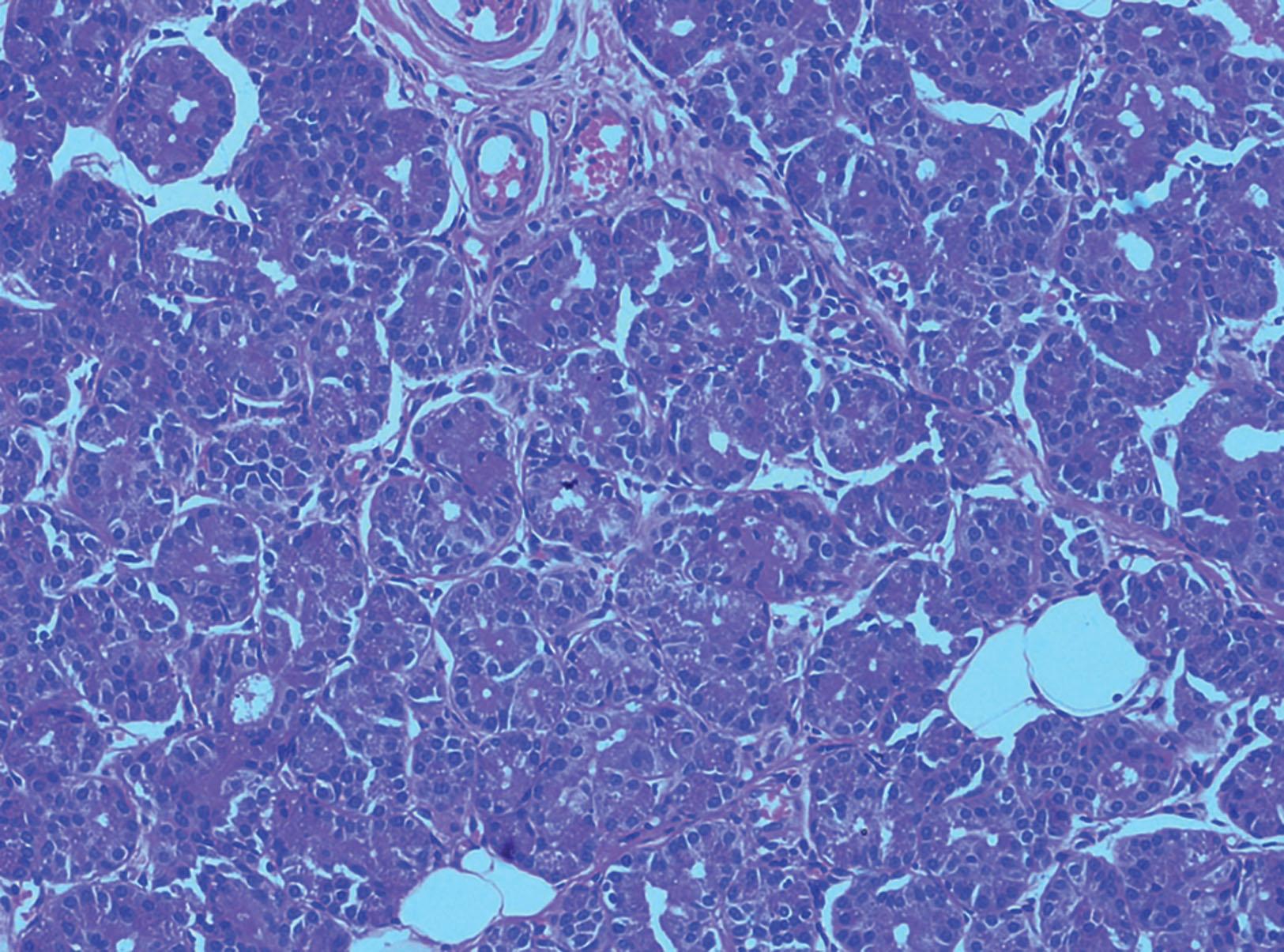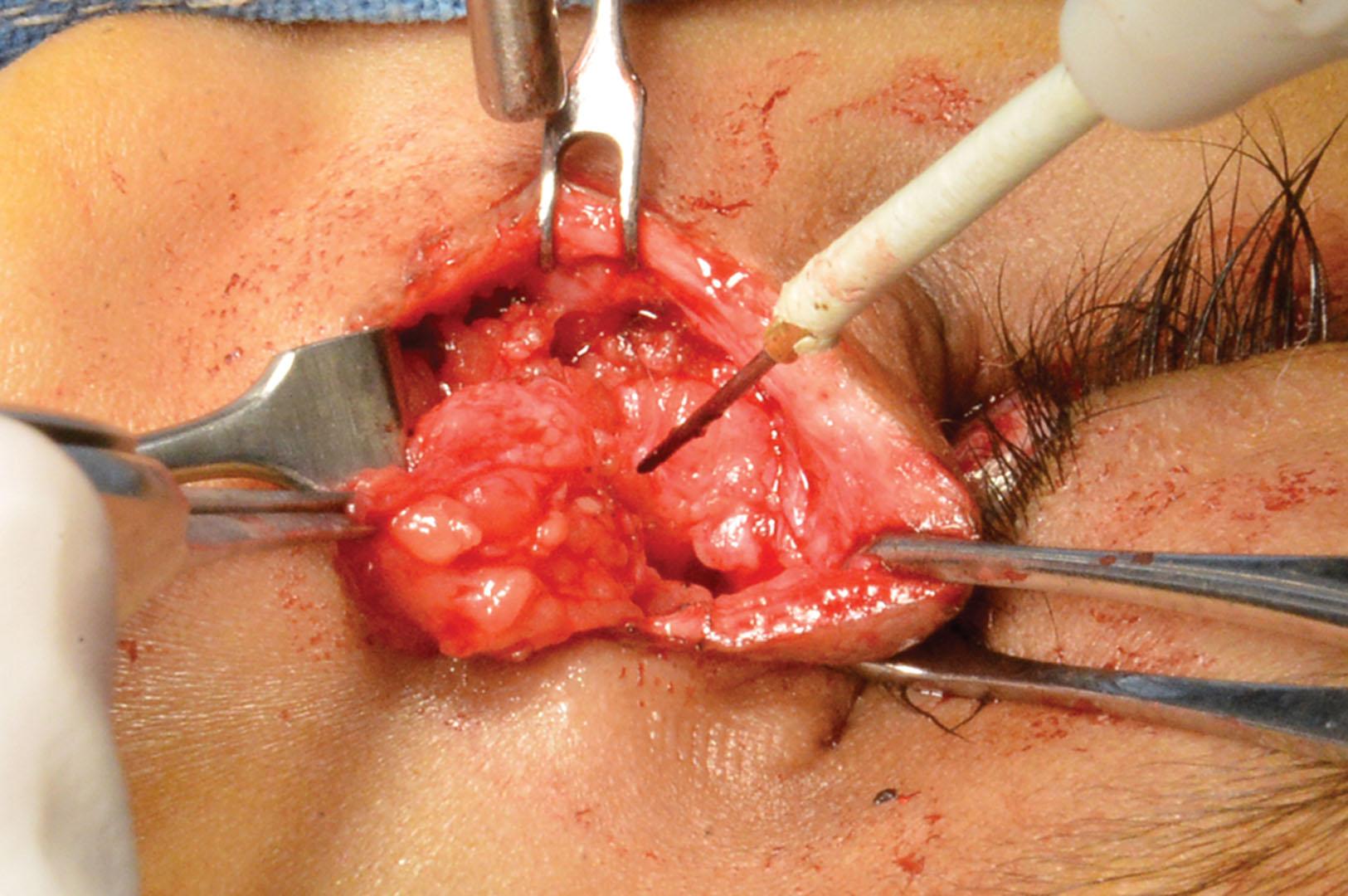Physical Address
304 North Cardinal St.
Dorchester Center, MA 02124
![]() For video accompanying this chapter see ExpertConsult.com. See inside cover for access details.
For video accompanying this chapter see ExpertConsult.com. See inside cover for access details.
The lacrimal system has two components – the secretory and the drainage portions. The secretory component is composed of the lacrimal gland and accessory lacrimal glands of Wolfring and Krause. The lacrimal drainage system is composed of the puncta, canaliculi, lacrimal sac and the nasolacrimal duct. Tears secreted by the major and accessory lacrimal glands contribute to the tear film covering the ocular surface which is critical to the maintenance of a healthy ocular surface. This chapter will provide an overview of the anatomy, physiology, and common pathologies of the lacrimal system in children.
Lacrimal gland embryogenesis can be divided into three stages:
Stage of presumptive gland formation: This corresponds to O’Rahilly’s (Carnegie) stages 19–20 and begins with focal forniceal epithelial thickening with surrounding mesodermal condensation.
Stage of epithelial bud: This corresponds to O’Rahilly’s stages 21–23. Structural initiation of the gland begins, appearing as nodular thickening in the superior conjunctival fornix with appearance of a lumen in the terminal buds.
Stage of glandular maturity: This corresponds to embryonic weeks 9–16 and heralds the appearance of myoepithelial cells, acini, ducts, and secretory granules which contribute to morphological and functional maturity.
The human lacrimal gland (LG) is housed in the bony lacrimal fossa in the supero-temporal portion of the orbit and is composed of two lobes, the orbital lobe and the palpebral lobe. It is a well-organized tubuloalveolar gland composed of lobules which are formed by neighboring acini and their ducts ( Fig. 18.1 ). Fusion of a few such lobules leads to the formation of lobes, each of which is separated by intervening connective tissue. Just like the lobes and lobules, the corresponding ducts are also structured to form interlobular, intralobular, interlobar, and intralobar ducts. The acinar and ductal epithelia are lined by myoepithelial cells which facilitate secretion and help to maintain the structural integrity of the LG components.

The acini and the ducts form the fundamental units of LG physiology. The acini secrete numerous constituents of the tears, including water, electrolytes, and proteins, which are further modified by the ductular epithelium by the process of selective resorption. These tears later form an important constituent of the ocular surface tear film. The importance of tear fluid from LG in maintaining the healthy microenvironment of the ocular surface cannot be over-emphasized.
Pediatric dry eye disease (DED) is an under-diagnosed entity. The cause may be congenital or acquired. Congenital causes broadly include all causes of alacrima ( Table 18.1 ), a rare condition characterized by structural and functional morphogenetic disorders. These include either complete absence of the LG, severe dysgenesis of the tubuloacinar architecture or innervation abnormalities. Acquired causes of DED include meibomitis, allergic conjunctivitis, vernal keratoconjunctivitis, post-trauma scarring, chemical and thermal burns, infections like Epstein–Barr virus and bacterial dacryoadenitis, post-radiotherapy, autoimmune etiologies like Sjögren syndrome, systemic lupus erythematosus, and Steven–Johnson syndrome.
|
The child with dry eyes usually presents with severe photophobia with or without ocular surface changes such as conjunctival injection, corneal staining due to punctate keratopathy, and in advanced stages keratinization of the ocular surface. Any child with suspected dry eye should be meticulously evaluated with the help of slit-lamp and clinical investigations like Schirmer 1, tear osmolarity, tear break-up time, corneal fluorescein staining, and conjunctival lissamine green staining. In addition, questionnaires and scoring systems like the Canada dry eye assessment (CDEA), dry eye score system (DESS), and ocular surface disease index (OSDI) are also helpful in evaluation and monitoring. In cases of suspected alacrima, computed tomography or magnetic resonance imaging can help to identify an absent or hypoplastic LG.
There are many treatment modalities for dry eyes tear replacement or tear simulating therapies. Each has benefits and disadvantages so treatment needs to be tailored for individual patient needs. In addition, treatments may also be directed towards the causative agents and underlying autoimmune diseases. While dry eye disease manifestations and treatments would be the focus of a pediatric ophthalmologist, it must be remembered that alacrima may be the initial manifestation of an underlying congenital syndrome (Riley Day syndrome) which is potentially fatal due to autonomic crisis. Hence, appropriate referral and multidisciplinary management are appropriate.
During embryogenesis part of the lacrimal gland may be sequestered, behaving independently in terms of growth, secretions or pathologies. Although rare, ectopic LG has been documented in the orbit, eyelids, extraocular muscles, conjunctiva, caruncle, and even within the lacrimal sac ( Fig. 18.2 ). Cysts involving this ectopic lacrimal tissue can manifest as proptosis, dystopia, ptosis, visual loss, lacrimal drainage obstruction or an ocular surface mass lesion. CT scans may help but excision biopsy with histological confirmation leads to a definitive diagnosis and, if totally excised, resolution.

Become a Clinical Tree membership for Full access and enjoy Unlimited articles
If you are a member. Log in here